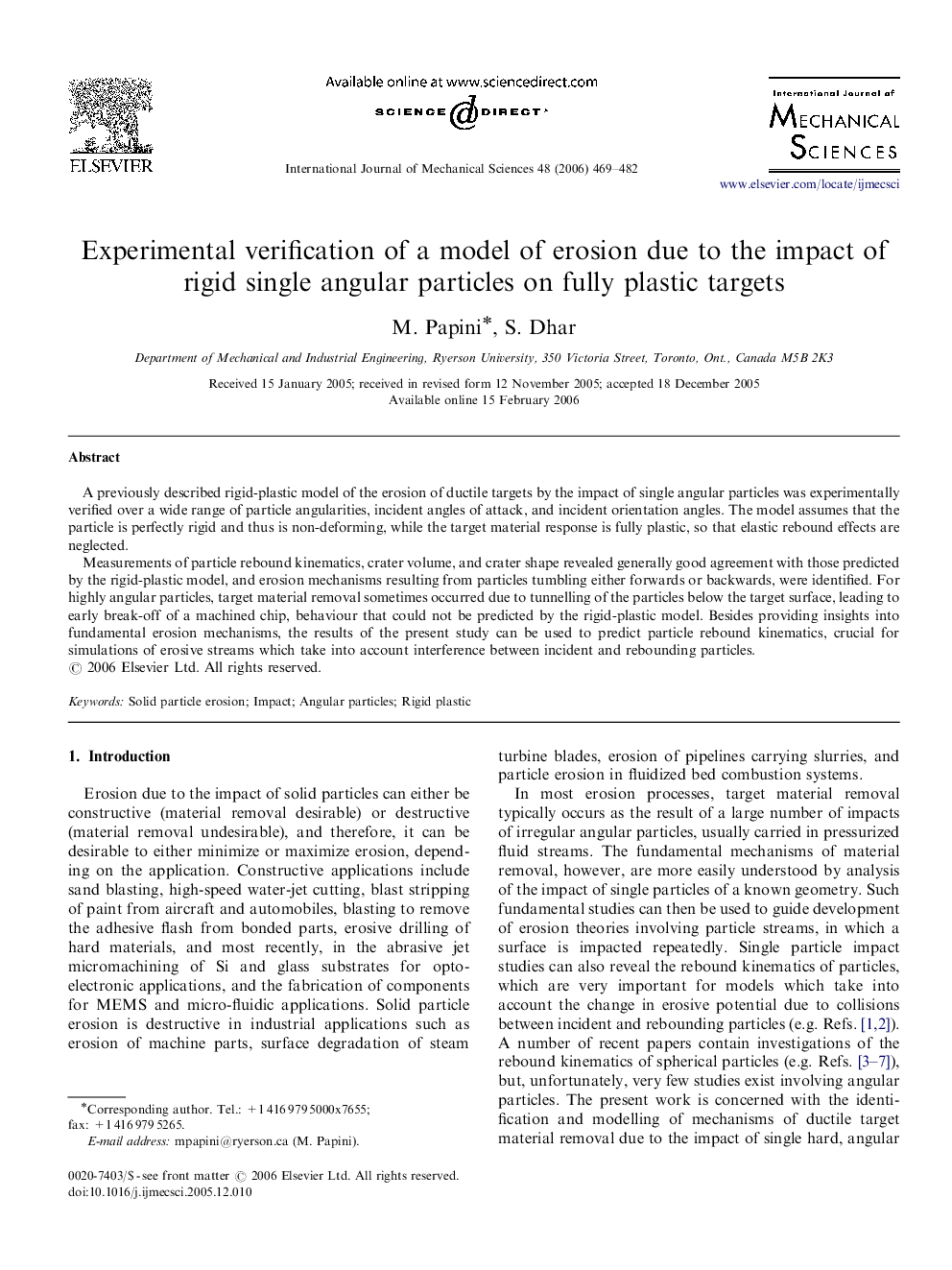| Article ID | Journal | Published Year | Pages | File Type |
|---|---|---|---|---|
| 780387 | International Journal of Mechanical Sciences | 2006 | 14 Pages |
A previously described rigid-plastic model of the erosion of ductile targets by the impact of single angular particles was experimentally verified over a wide range of particle angularities, incident angles of attack, and incident orientation angles. The model assumes that the particle is perfectly rigid and thus is non-deforming, while the target material response is fully plastic, so that elastic rebound effects are neglected.Measurements of particle rebound kinematics, crater volume, and crater shape revealed generally good agreement with those predicted by the rigid-plastic model, and erosion mechanisms resulting from particles tumbling either forwards or backwards, were identified. For highly angular particles, target material removal sometimes occurred due to tunnelling of the particles below the target surface, leading to early break-off of a machined chip, behaviour that could not be predicted by the rigid-plastic model. Besides providing insights into fundamental erosion mechanisms, the results of the present study can be used to predict particle rebound kinematics, crucial for simulations of erosive streams which take into account interference between incident and rebounding particles.
